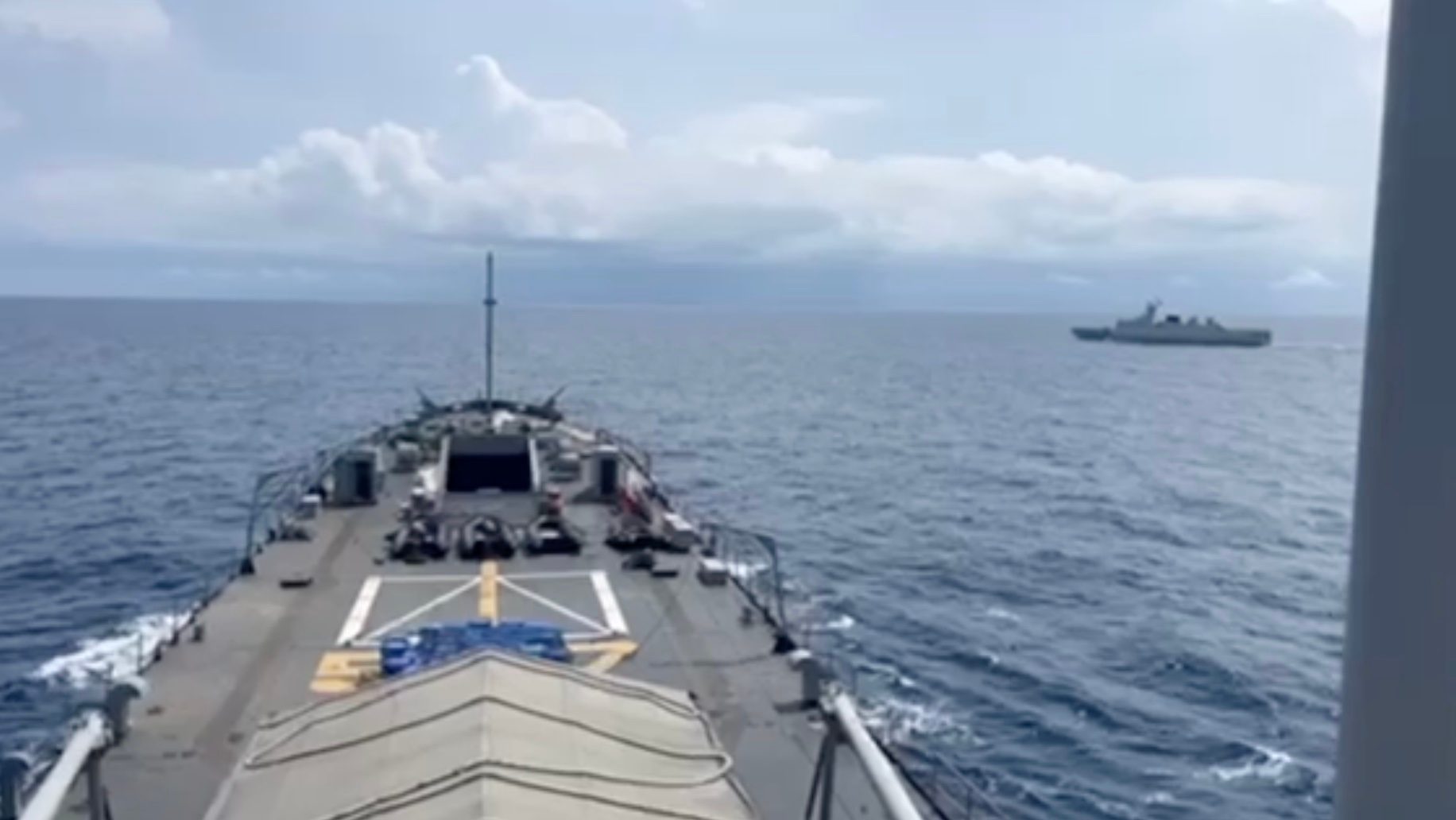SUMMARY
This is AI generated summarization, which may have errors. For context, always refer to the full article.

The Philippine Navy made headlines on Tuesday, February 27, after its spokesperson for the West Philippine Sea, Commodore Roy Trinidad, said in an interview that “interference (in) our electronic capabilities” during missions and rotations in the West Philippine Sea “has been going on for the past three or four years, maybe even earlier.”
“They have noted an increase in cyber interference, electronic interference, jamming, and stuff like that, not only for equipment of the ship but also for land-based communication equipment. This usually happens, or are noted during preparation stages for Rore [rotation and reprovisioning] missions. So yes, there has been observed activities to interfere with our internal equipment,” added Trinidad.

The Navy spokesperson had been asked if, like the Philippine Coast Guard (PCG), gray ships in the West Philippine Sea had experienced systems interference by China. The PCG earlier said they suspected Beijing of blocking their AIS transmitters while at sea.
Trinidad’s full quote, based on a transcript of his interview, is as follows: “The activities of China in the West Philippine Sea has been going on for quite some time now. When it comes to interference on our electronic capabilities…. I have discussed this with the commander of Naval Forces west this morning, and it has been going on for the past three or four years, maybe even earlier.”
News headlines came swiftly: the Philippines was claiming that China wasn’t just allegedly meddling with the electronics of white ships in the West Philippine Sea, but with its gray ships too.
Trinidad’s walk back also came quickly. In a later interview, Trinidad clarified in a mix of English and Filipino: “I should have been very careful, the question was if China has been interfering in those areas and I said Chinese activities have increased in the West Philippine Sea. I should have expounded more that when I was referring to increased interference, I was not addressing China. We have no proof to say that it was them.”
The Chinese embassy in Manila, repeatedly sought for comment, has not issued a statement as of posting.
Big deal?
Why would this be a big deal? Well it’s one thing to allegedly meddle with the civilian PCG, but a whole different thing to meddle with the systems of the military.
The West Philippine Sea, or part of the South China Sea within the Philippines’ exclusive economic zone, has been the flashpoint for tensions between Beijing and Manila in the area. China claims almost all of the South China Sea, including features well within the Philippine EEZ, as its own, despite a 2016 arbitral ruling that deemed China’s claim invalid.
Recently, tensions are most tense in Ayungin Shoal, where a grounded World War II ship serves as a military outpost, and Bajo de Masinloc, the traditional fishing ground of fisherfolk from several claimant states including the Philippines. Both features are just over 100 nautical miles away from Philippine shores.
Chinese ships – typically the China Coast Guard and Chinese maritime militia – are regulars in those waters. The Chinese Navy has also been known to patrol the West Philippine Sea, although its gray ships usually keep a considerable distance from Filipino ships.
While Marcos did not directly comment on alleged interference by the Chinese – whether it be with the PCG or the Navy – he did raise alarm over the presence of Chinese Navy ships. Whether they stay away or stay close is irrelevant, said Marcos – the issue is that they’re there in the first place.
“It’s worrisome because there are two elements to that: one is that the… dati Coast Guard lang ng China ang gumagalaw doon sa area natin. Ngayon, may Navy na sumama pa mga fishing boat. So, nagbabago ang sitwasyon, but – well, maliwanag naman para sa atin, we don’t really…we just watch, of course, what everybody is doing, but really for us, patuloy pa rin natin, we just defend our maritime territory. We continue to support all of our fishermen, fisherfolks who make their living from these fishing grounds at patuloy naman nating tutulungan sila,” said Marcos before flying out to Canberra to address the Australian Parliament.
(Before, it was just the China Coast Guard operating in that area. Now even the Chinese Navy is there alongside the fishing boats. The situation is changing but it’s clear to us that we don’t really… we just watch, of course, what everybody is doing, but really for us, we continue, we just defend our maritime territory. We continue to support all of our fishermen, fisherfolks who make their living from these fishing grounds and we will continue helping them.)
Marcos was likely referring to the presence of Chinese Navy ships during a mission to Bajo de Masinloc to assist Filipino fisherfolk in the area.
China has been known to harass and block fisherfolk from entering the resource-rich and safe lagoon of the shoal, even if Bajo de Masinloc is considered traditional fishing grounds for Filipinos, Chinese, Taiwanese, and Vietnamese fisherfolk. Chinese ships also harassed Philippine government ships during their last rotation to the shoal.
The Philippines and China have been trying to dial down tensions, with Shanghai hosting in January a bilateral meeting during which senior officials agreed to improve maritime communication following repeated tense incidents in Ayungin Shoal. – Rappler.com
Add a comment
How does this make you feel?
There are no comments yet. Add your comment to start the conversation.